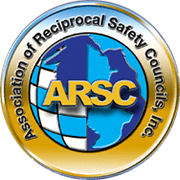By James Hinton
Director, EHS&Q
As safety professionals and leaders in industry, we all know that a safety program will only be as strong as the least-effective manager in the organization. As leaders, we all know how difficult it is to achieve a sustainable safety culture within our workplace because many of the leaders have lacked the skills and knowledge to support the safety team.
The low level and even brand-new leaders within the company are not always part of setting the overall goals and direction of the company’s safety plan but, they’re the people who ultimately help in either creating the culture you want and are responsible for the communication through the rest of leadership to the newest entry level worker in the field or plant and taking action to achieve the goals of the plans.
Like most, sometimes as safety professionals we are skeptical of the impact that these new and lower-level leaders really have on the overall program regarding safety goals and safety culture success within the organization. It is having the safety oriented and trained leaders on board with the safety goals and plans that help strong companies with positive results like employees taking fewer shortcuts and more personal accountability for their own safety and the safety of their coworkers.
When you have safety oriented and trained leaders around and supporting the organization from the ground level up the employees feel more engaged and can focus on production activities and quality without putting safety last in thinking. Essentially, leadership is an effective liaison between the top leadership and safety team to the employees to help reduce and eliminate repeated incidents and injuries in the workplace.
When these leaders are not trained and are not given the knowledge and skills to be strong safety-oriented leaders, then the organization cannot sustain the safety culture and gaps will begin to form within the organization and accidents and injuries can occur more easily as the ripple effect to the workers from the leaders is diminished and lacking. This does not mean the leaders are bad or do not want to participate. It simply identifies an area that the company needs to improve on and involve leadership from the bottom into the goals. Safety Involvement is key to the plan’s sustainability.
Training for front line leaders is an important step that most companies take on very easily. The catch is the continual improvement of the leader and support. These new leaders need continued open support from higher leadership to help build skills and knowledge that is not taught over one training class, but over time and experience. This is also a key element the new leader needs to build trust with his employees so they not only follow safety rules because he is the leader but because they trust his knowledge and skills in that his goal is not only production and quality to get the job done but to make sure they are safe while they complete the task.
For years now we have talked about safety training for supervisors, managers, and leaders, but it goes much deeper then just training it goes into building teams and creating trust from the bottom up! A company that focuses safety with bottom-up leadership and employee involvement can have successful safety programs and meet many goals not only in safety, but quality of work and production.
